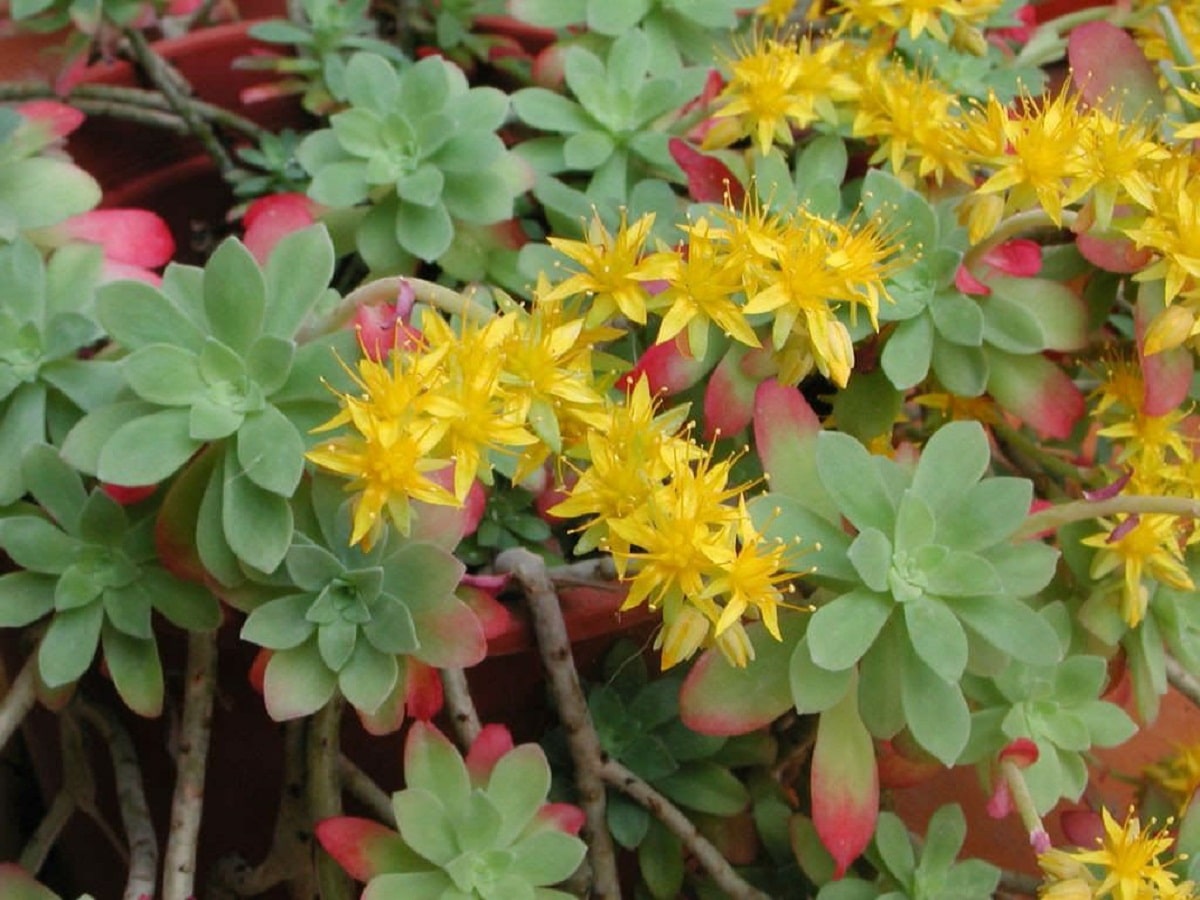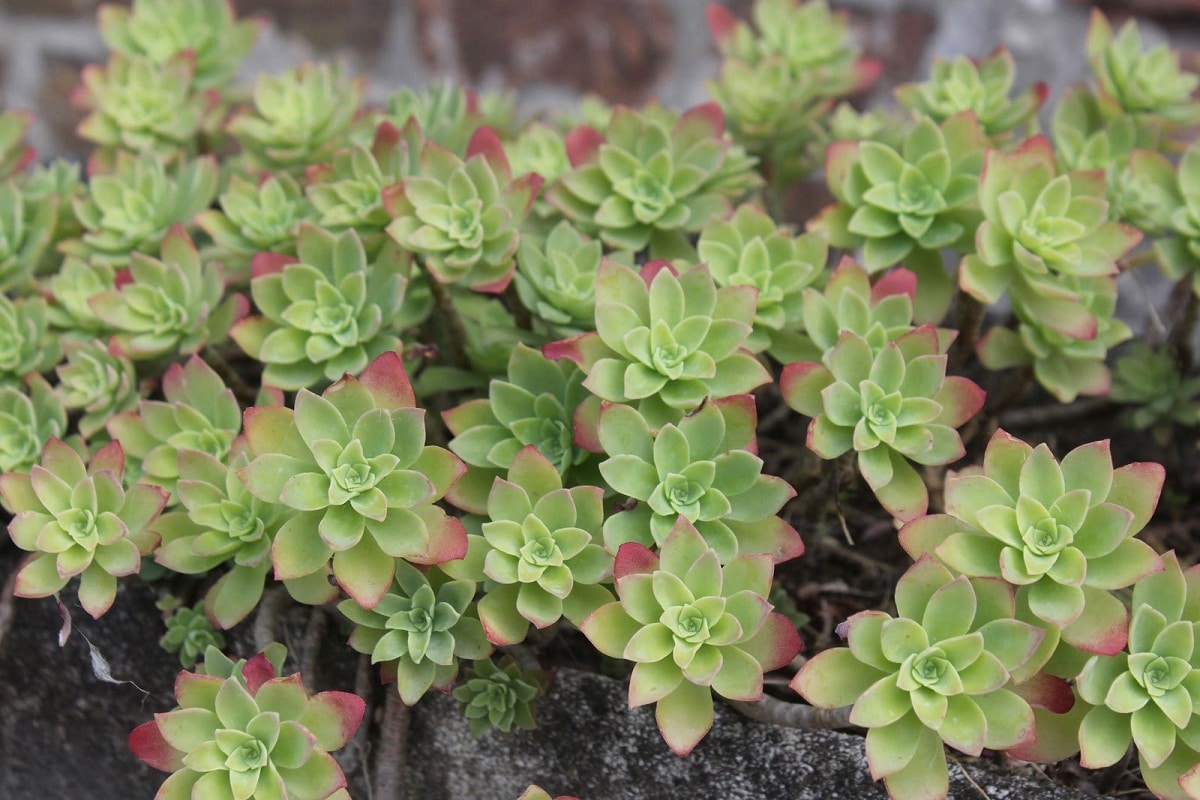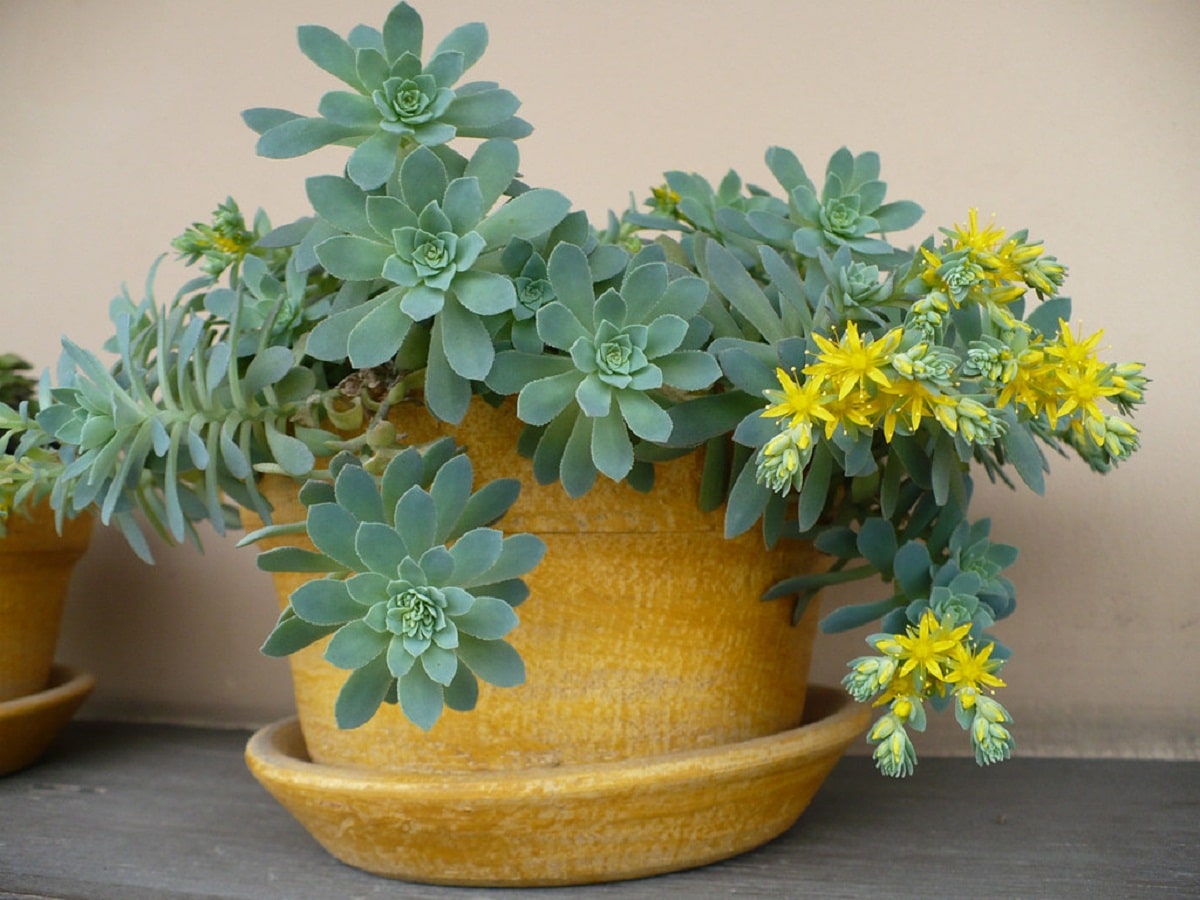
La sedum palmeri consists a succulent herbaceous plant belonging to the family Crassulaceae, from Mexico, which due to its great level of beauty, simple cultivation, flowering and rapid development, is usually cultivated for ornamental purposes.
In general, it is used to cover both rocks and planters, which they are usually little exposed to sunlight. It should be noted that it is not a plant that withstands intense exposure to the sun during the summer, especially in areas of the tropics.
Features sedum palmeri

This plant it is usually characterized by presenting rosettes with not very united leaves and creeping stems (which are semi-erect in the case of smaller plants) and quite branched which have the ability to cover huge areas in a short period of time.
It is also worth mentioning that its stems usually develop multiple roots (that grow from the scars where the ancient leaves were), which offer the plant the opportunity to survive in the event of a fracture; since if the stem were to break, there will be more roots that will allow the plant to stay alive without having to produce them again.
Likewise, its stems have a grayish green tone, and are distinguished by being completely smooth and glabrous. Its leaves are usually oval in shape, being elongated and not very fleshy, so they do not exceed 0,4cm in thickness; They are generally about 10cm long and about 3cm wide in the middle.
They have an entire margin and an apex that may well be rounded or a little sharp. They are usually light green and greyish in color; their rosettes are not usually too compact, so it is possible to appreciate a slight separation of the stem between one and the other, unlike what happens in other species of the same genus.
Its flowers are usually quite small, however, many of them are arranged in terminal inflorescences which give it a really attractive appearance. These inflorescences grow around the apex of the stems and they have the capacity to create more than 40 flowers, which will open slowly.
Likewise, its flowers have a star shape and corolla segments (5 free petals in this species), while their reproductive structures are distinguished by being totally yellow. It is also worth mentioning that in its flowers it is possible to appreciate both 10 stamens and 4 globose central carpels that have acute apices.
Uses
- This plant is often commonly used as a covering plant those driest areas in the garden, as well as for rockeries and even, in pots and planters for terraces, balconies and patios.
- In addition, it is perfect for gardens near the sea or within large cities, since it is able to withstand both salinity and atmospheric pollution. In any case, within its main uses we can point out those mentioned below:
- They are rockery plants.
- They are totally suitable for covering stony spaces and dry where other plants could not survive.
- Ideal for roadsides.
- Completely suitable for covering stone walls.
- They are used to cover the ground in such a way that they help prevent the appearance of weeds.
It should also be noted that, although fully cover the ground, they almost do not consume nutrients; and because it has such superficial and small roots, they do not invade or disturb the plants that may be around it, which is why they are very appropriate to protect trees and other plants that are not capable of tolerating excess. of sun and drought.
Its medicinal properties
In the same way as other plants, its leaves may offer medicinal properties, standing out especially as healing and anti-inflammatory when applied directly to the skin.
It is characterized by being very easy to keep in the gardenHowever, it must be borne in mind that it is quite susceptible to both strong sunlight and prolonged droughts. With that said, below we talk a little about the basic care that this succulent plant requires:
Lighting design
La sedum palmeri consists a species that needs a high level of illumination to be able to develop optimally and flourish, however, it is not able to withstand direct exposure to the midday sun.
Therefore, it is advisable to grow it in semi-shady areas or under nets of shading, in order to prevent that it dehydrates quickly and its leaves burn. Also, it is not convenient to grow it in shady places.
Temperature
This plant must thrive in cool climates in which the temperatures do not exceed 35 ° C and are not less than about 8 ° C. The most advisable thing is to grow it in spaces that have a temperature range around 15-28 ° C. In addition, it is very important to avoid sedum palmeri exposed to frost.
Substratum
It requires a good drainage system so its roots can stay healthy and not rot. Does not require a soil that is too rich in organic matterhowever, you will always appreciate it being applied to you on a quarterly basis. It should also be noted that this plant can develop without problems when grown in specially prepared substrates for cacti and succulents, by providing it with a more coarse sand layer.
Irrigation
Contrary to others succulent plants, is able to withstand more constant watering, although not excessively. When there is an intense level of environmental heat, it is common for this plant to dehydrate in a very short time, so during the summer it is necessary to water it a couple of times a week.
Multiplication
Its multiplication can be done with cuttings about 10cm. Likewise, it is possible to cut part of some of the creeping stems and then separate the plant. Likewise, the new rosettes that usually grow around the stems, in the same way can be separated in order to get new plants.
Diseases and pests

This plant is usually attacked by aphids, snails, mites, mealybugs and also by various types of birds; In the case of pests such as aphids and mealybugs, it is possible to eliminate them using a cotton swab dipped in alcohol or, otherwise, by removing them manually with your nails.
For its part, it is possible to prevent the presence of mites making sure that there is a humid environment around the plant, for this it is recommended to use sprays at least every 2 days. In the case of snails, they tend to devour the new shoots and that is precisely why it is advisable to place the plant in places that are unreachable for them.
No doubt, this stands out for being a beautiful succulent or crass plant, not cactus, which is a bit difficult not to fall in love after meeting it. Now that you know more about it, would you like to cultivate it?
I wanted you to guide me to replant the new, hanging rosettes of the Sedum palmeri.
How to do? Is its reproduction possible?
Hello Maria Inés.
Yes, it is actually very easy. If they have a bit of stem, even if it is short, you simply have to plant them in pots with soil, water, put them in semi-shade and… wait. It doesn't have much mystery 🙂
The only thing is that you should try to water only when the soil is dry. But otherwise, they will take root soon if it is spring or summer.
Greetings.